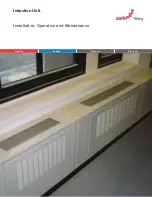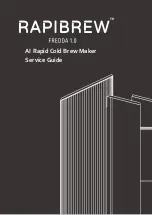
OPERATION
20
Manual 0-2583
A. Piloting
Piloting is harder on parts life than actual cutting be-
cause the pilot arc is directed from the electrode to
the tip rather than to a workpiece. Whenever pos-
sible, avoid excessive pilot arc time to improve parts
life.
B. Torch Standoff
Improper standoff (the distance between the torch tip
and workpiece) can adversely affect tip life as well as
shield cup life. Standoff may also significantly affect
the bevel angle. Reducing standoff will generally re-
sult in a more square cut.
C. Edge Starting
For edge starts, hold the torch perpendicular to the
workpiece with the front of the tip near(not touching)
the edge of the workpiece at the point where the cut
is to start. When starting at the edge of the plate, do
not pause at the edge and force the arc to "reach" for
the edge of the metal. Establish the cutting arc as
quickly as possible.
D. Direction of Cut
In the torches, the plasma gas stream swirls as it leaves
the torch to maintain a smooth column of gas. This
swirl effect results in one side of a cut being more
square than the other. Viewed along the direction of
travel, the right side of the cut is more square than the
left (Refer to Figure 4-4). To make a square-edged cut
along an inside diameter of a circle, the torch should
move counterclockwise around the circle. To keep the
square edge along an outside diameter cut, the torch
should travel in a clockwise direction.
Right Side
Cut Angle
Left Side
Cut Angle
A-00512
Figure 4-4 Side Characteristics Of Cut
E. Dross
When dross is present on carbon steel, it is commonly
referred to as either “high speed, slow speed, or top
dross”. Dross present on top of the plate is normally
caused by too great a torch to plate distance. "Top
dross" is normally very easy to remove and can often
be wiped off with a welding glove. "Slow speed dross"
is normally present on the bottom edge of the plate.
It can vary from a light to heavy bead, but does not
adhere tightly to the cut edge, and can be easily
scraped off. "High speed dross" usually forms a nar-
row bead along the bottom of the cut edge and is very
difficult to remove. When cutting a troublesome steel,
it is sometimes useful to reduce the cutting speed to
produce "slow speed dross". Any resultant cleanup
can be accomplished by scraping, not grinding.
4.07 Hand Torch Operation
A. Drag or Standoff Cutting With Hand Torch
1. The torch can be comfortably held in one hand or
steadied with two hands. Choose the technique
that feels most comfortable and allows good con-
trol and movement. Position the index finger or
thumb to press the control switch on the torch
handle.
CAUTION
The tip should never come in contact with the work-
piece except during drag cutting operations. The
output current should be set to 35 amps or less
when drag cutting.
2. Depending on the type of cutting operation, do
one of the following:
a. For edge starts, hold the torch perpendicular to
the workpiece with the front of the tip on the
edge of the workpiece at the point where the
cut is to start.
b. For standoff cutting, hold the torch 1/8 - 3/8 in
(3 - 9 mm) from the work
c. For drag cuts install the drag cutting tip and set
the output current to 35 amps or less. Keep
the torch in contact with the workpiece during
the cutting cycle.
Содержание PCH-100XL
Страница 2: ......
Страница 6: ......
Страница 18: ...INTRODUCTION DESCRIPTION 12 Manual 0 2583...
Страница 22: ...INSTALLATION PROCEDURES 16 Manual 0 2583...
Страница 38: ...SERVICE 32 Manual 0 2583...
















































